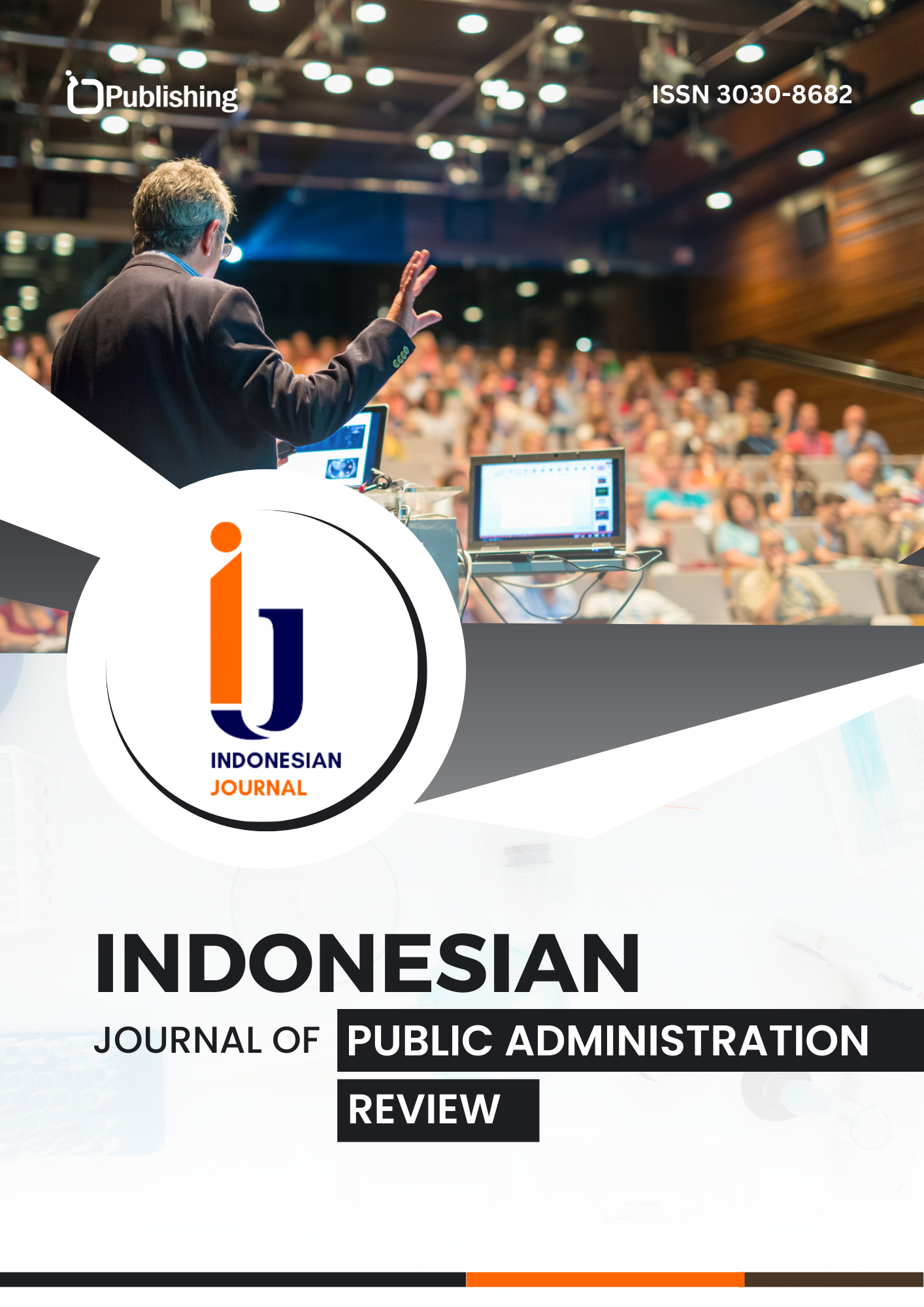Dampak Tata Ruang Kantor Terhadap Efisiensi Tempat Kerja untuk Mengoptimalkan Alur Kerja Karyawan
DOI:
https://doi.org/10.47134/par.v1i3.2580Keywords:
Tata Ruang Kantor, Efisiensi Tempat Kerja, (Optimalisasi Alur Kerja, SMKN 11 Bandung)Abstract
Tata ruang kantor mempunyai dampak yang cukup signifikan terhadap efisiensi tempat kerja dan optimalisasi alur kerja karyawan di SMKN 11 Bandung. Penelitian ini menggunakan pendekatan kualitatif, yang berfokus pada penelusuran suatu objek dengan membuat deskripsi secara sistematis, faktual, dan akurat mengenai fakta atau kejadian yang diteliti. Hasil diskusi dari penelitian ini menunjukkan bahwa tata ruang kantor di SMKN 11 Bandung cukup baik tetapi belum sepenuhnya mendukung efisiensi tempat kerja dan optimalisasi alur kerja karyawan, keterbatasan lahan serta biaya yang dimiliki merupakan salah satu faktor penyebabnya. Pada front office yang ditempatkan di bangunan terpisah dengan kantor ruang guru, kepala sekolah, dan manajemen dapat memperlambat alur kerja dan penilaian buruk dari tamu. Penelitian ini merekomendasikan beberapa solusi untuk meningkatkan efisiensi tempat kerja dan optimalisasi alur kerja karyawan di SMKN 11 Bandung seperti menyediakan alat atau teknologi otomatis sebagai penghubung informasi antara front office dan kantor guru atau manajemen sehingga informasi akan diterima lebih cepat dan alur kerja karyawan akan lebih optimal. Dengan menerapkan solusi tersebut, diharapkan tata ruang kantor di SMKN 11 Bandung dapat mencapai efisiensi tempat kerja dan optimalisasi alur kerja karyawan yang lebih baik.
References
Ardhyananda, A., & Murwanti, S. (2019). Pengaruh Lingkungan Kerja, Kompensasi, Motivasi dan Disiplin Kerja Terhadap Karyawan PD BPR Bank Solo.
Burleyson, C. D. (2020). Future western U.S. building electricity consumption in response to climate and population drivers: A comparative study of the impact of model structure. Energy, 208. https://doi.org/10.1016/j.energy.2020.118312 DOI: https://doi.org/10.1016/j.energy.2020.118312
Clifford, B. (2019). Understanding the Impacts of Deregulation in Planning: Turning Offices into Homes? Understanding the Impacts of Deregulation in Planning: Turning Offices into Homes? 1–225. https://doi.org/10.1007/978-3-030-12672-8 DOI: https://doi.org/10.1007/978-3-030-12672-8_1
Duan, J. (2021). Addressing the macroeconomic and hedonic determinants of housing prices in Beijing Metropolitan Area, China. Habitat International, 113. https://doi.org/10.1016/j.habitatint.2021.102374 DOI: https://doi.org/10.1016/j.habitatint.2021.102374
Dziekański, P. (2021). Assessment of spatial diversity of the potential of the natural environment in the context of sustainable development of poviats in poland. Energies, 14(19). https://doi.org/10.3390/en14196027 DOI: https://doi.org/10.3390/en14196027
Fajri, Y. A., & Wulandari, R. (2022). Analisis Sistem Tata Ruang Kantor Pemerintahan Kemendikbud Kabupaten Kuningan terhadap Produktivitas Kerja Pegawai. Jurnal Vastukara: Jurnal Desain Interior, Budaya, Dan Lingkungan Terbangun, 2(2), 153–160. DOI: https://doi.org/10.59997/vastukara.v2i2.1738
Geng, J. (2020). Three multi-frequency and multi-system GNSS high-precision point positioning methods and their performance in complex urban environment. Cehui Xuebao/Acta Geodaetica et Cartographica Sinica, 49(1), 1–13. https://doi.org/10.11947/j.AGCS.2020.20190106
Golasz-Szolomicka, H. (2019). Architectural and Structural Analysis of Selected Twisted Tall Buildings. IOP Conference Series: Materials Science and Engineering, 471(5). https://doi.org/10.1088/1757-899X/471/5/052050 DOI: https://doi.org/10.1088/1757-899X/471/5/052050
Koohsari, A. M. (2022). Subdivided venetian blind control strategies considering visual satisfaction of occupants, daylight metrics, and energy analyses. Energy and Buildings, 257. https://doi.org/10.1016/j.enbuild.2021.111767 DOI: https://doi.org/10.1016/j.enbuild.2021.111767
Kotharkar, R. (2022). Progress in extreme heat management and warning systems: A systematic review of heat-health action plans (1995-2020). Sustainable Cities and Society, 76. https://doi.org/10.1016/j.scs.2021.103487 DOI: https://doi.org/10.1016/j.scs.2021.103487
Lee, J. K. (2022). New rail transit projects and land values: The difference in the impact of rail transit investment on different land types, values and locations. Land Use Policy, 112. https://doi.org/10.1016/j.landusepol.2021.105807 DOI: https://doi.org/10.1016/j.landusepol.2021.105807
Li, P. (2021). Calculation method and model of carbon sequestration by urban buildings: An example from Shenyang. Journal of Cleaner Production, 317. https://doi.org/10.1016/j.jclepro.2021.128450 DOI: https://doi.org/10.1016/j.jclepro.2021.128450
Lin, P. (2020). Revealing Spatio-Temporal Patterns and Influencing Factors of Dockless Bike Sharing Demand. IEEE Access, 8, 66139–66149. https://doi.org/10.1109/ACCESS.2020.2985329 DOI: https://doi.org/10.1109/ACCESS.2020.2985329
Majewska, A. (2022). Pandemic resilient cities: Possibilities of repairing Polish towns and cities during COVID-19 pandemic. Land Use Policy, 113. https://doi.org/10.1016/j.landusepol.2021.105904 DOI: https://doi.org/10.1016/j.landusepol.2021.105904
Mashabi, N. A., & Wulaningrum, A. W. (2022). Pelatihan Penataan Ruang Kantor untuk Meningkatkan Kinerja Pegawai di Kecamatan Muara Gembong Kabupaten Bekasi Jawa Barat. Prosiding Seminar Nasional Pengabdian Kepada Masyarakat, 3, SN.
Mawarni, R., & Yusuf, M. (2020). Pengaruh Tata Ruang Kantor terhadap Efektifitas Kerja Pegawai pada Dinas Koperasi Perindustrian dan Perdagangan Kota Bima. Forum Ekonomi, 22(2), 232–237.
Musdalifah, S., & others. (2022). Pengaruh Penataan Ruang Kantor Madrasah terhadap Kualitas Pelayanan Ketatausahaan. Jurnal Kependidikan, 16(2), 89–101.
Nadiyah, L., & others. (2023). Peran Tata Letak Ruang Kantor dalam Meningkatkan Efektivitas Komunikasi Guru. Jurnal Studi Keislaman, 9(1), 91–105. DOI: https://doi.org/10.61136/2amkk667
Papadopoulos, S. (2019). Rethinking HVAC temperature setpoints in commercial buildings: The potential for zero-cost energy savings and comfort improvement in different climates. Building and Environment, 155, 350–359. https://doi.org/10.1016/j.buildenv.2019.03.062 DOI: https://doi.org/10.1016/j.buildenv.2019.03.062
Risha, A. N., & Nugraha, A. E. (2022). Analisa Tata Ruang Kantor dan Pengaruhnya terhadap Kinerja Pegawai. Serambi Engineering, VII(1), 2754–2763. DOI: https://doi.org/10.32672/jse.v7i1.3885
Sailer, K. (2021). Differential perceptions of teamwork, focused work and perceived productivity as an effect of desk characteristics within a workplace layout. PLoS ONE, 16(4). https://doi.org/10.1371/journal.pone.0250058 DOI: https://doi.org/10.1371/journal.pone.0250058
Shi, Z. (2021). Floor area density and land uses for efficient district cooling systems in high-density cities. Sustainable Cities and Society, 65. https://doi.org/10.1016/j.scs.2020.102601 DOI: https://doi.org/10.1016/j.scs.2020.102601
Siregar, F. A., & Usriyah, L. (2021). Peranan komunikasi organisasi dalam manajemen konflik. Idarah (Jurnal Pendidikan Dan Kependidikan), 5(2), 163–174. DOI: https://doi.org/10.47766/idarah.v5i2.147
Taher, M., & others. (2023). Pengaruh Fasilitas Sekolah dan Tata Ruang Kantor terhadap Produktivitas Kerja Guru SMPN 3 Lilirilau. Jurnal Pendidikan Dan Kewirausahaan, 11, 1. https://journalstkippgrisitubondo.ac.id/index.php/PKWU/index DOI: https://doi.org/10.47668/pkwu.v11i1.693
Wang, F. (2022). How community medical facilities can promote resilient community constructions under the background of pandemics. Indoor and Built Environment, 31(4), 1018–1027. https://doi.org/10.1177/1420326X211048537 DOI: https://doi.org/10.1177/1420326X211048537
Wang, J. (2023). Evaluation of the impact of urban morphology on commercial building carbon emissions at the block scale – A study of commercial buildings in Beijing. Journal of Cleaner Production, 408. https://doi.org/10.1016/j.jclepro.2023.137191 DOI: https://doi.org/10.1016/j.jclepro.2023.137191
Warner, J. (2019). Securitization of climate change: How invoking global dangers for instrumental ends can backfire. Environment and Planning C: Politics and Space, 37(8), 1471–1488. https://doi.org/10.1177/2399654419834018 DOI: https://doi.org/10.1177/2399654419834018
Yuniarti, D., & others. (2022). Pengaruh Tata Ruang Kantor terhadap Kinerja Guru di Madrasah Pembangunan. Jurnal Manajemen Pendidikan Islam, 7(2), 102–112. DOI: https://doi.org/10.18860/jmpi.v7i2.14963
Zhang, N. (2022). Block-based variations in the impact of characteristics of urban functional zones on the urban heat island effect: A case study of Beijing. Sustainable Cities and Society, 76. https://doi.org/10.1016/j.scs.2021.103529 DOI: https://doi.org/10.1016/j.scs.2021.103529
Zhu, R. (2019). Solar accessibility in developing cities: A case study in Kowloon East, Hong Kong. Sustainable Cities and Society, 51. https://doi.org/10.1016/j.scs.2019.101738 DOI: https://doi.org/10.1016/j.scs.2019.101738










